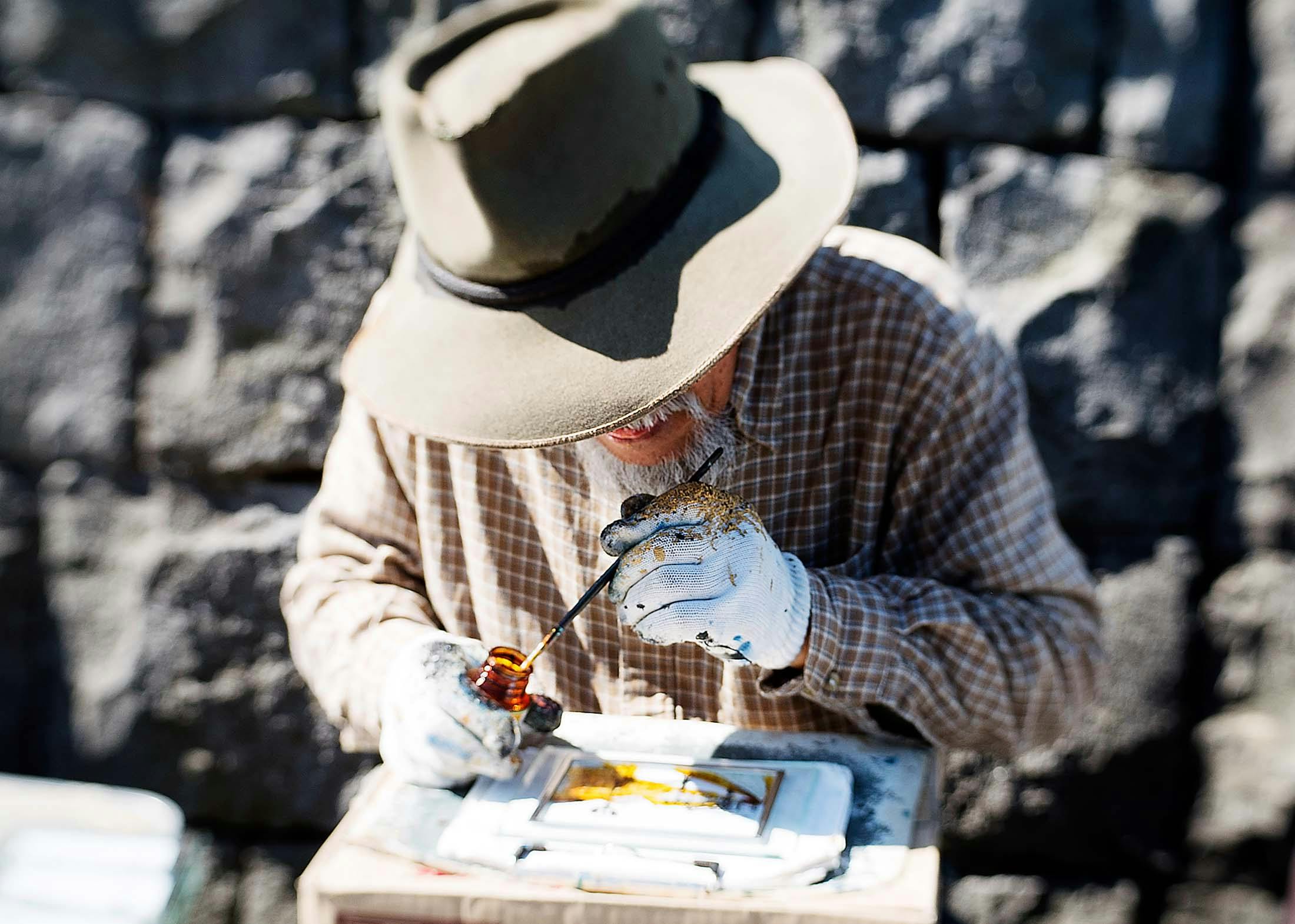Five Destinations That Embody the Art of Travel
Discovering art through travel is among the best ways to immerse oneself in new cultures. It enables us to remain inspired long after we’ve returned home. The art of travel allows us to journey deeper in a destination, as we develop an appreciation for the history of a place, as well as its people and their way of thinking. There are so many unique art destinations to visit. Whether exploring a museum, admiring street art or perusing local workshops where talented artisans create their wares, engaging with local art and design while traveling enriches our experiences. Read on to discover five experiences in destinations that embody the art of travel:

1. The enchanting murals of Chile
Chile’s vibrant colors speak to the words of one of the country’s greatest poets, Pablo Neruda. At both his hilltop home in Valparaiso, which more than merits a visit, and his residence in Santiago, expressions of poetic artwork fill the writer’s spaces.
Neruda’s presence is felt both in the dream-like murals leading up to his home in Santiago’s Barrio Bellavista neighborhood and in the painted birds and vines winding around the front door. This bohemian barrio in Santiago is filled with murals by both professional and amateur artists, and evokes the feeling of walking through an open-air gallery.
On a visit to this South American country, one of the most remarkable displays of Chile’s outdoor art can be admired approximately 700 miles north of Santiago, in the port city of Antofagasta, where colorful murals line the walkways, outlining cultural and historical references. Likewise, in the city of Valparaiso, entire buildings are adorned in remarkable works of art. Inspiration is plentiful throughout the country.

2. Artisan creations around every corner in Otaru, Japan
The small harbor city of Otaru in Japan offers a fascinating insight into the history of the rich and creative Japanese culture, such as the Japanese Gold Leaf tradition. No detail is overlooked in the name of decoration. As an example, in this beautiful city and elsewhere in Japan, decorative manhole covers celebrate local icons, such as the seals of Otaru’s Aquarium, celebrating the art of travel in the most pedestrian of places.
Along the Otaru Canal, Japanese artists passionately labor over intricate paintings — each one a unique masterpiece of ultimate skill. Walking along Sakaimachi Street, a preserved merchant street in the city center, glass workshops uncover the art of creating local Otaru glass. What better souvenir than a handmade bowl or vase? Otaru glassware is known and admired throughout the country. There’s even a five-story museum dedicated to the pursuit, which was opened by Kitaichi, a local glass producer. The city’s reverence for the art of glass blowing clearly runs deep.

3. High art and culture in Venice, Italy
It’s no exaggeration to say that Venice is among the best art destinations in the world. The entire city is often considered a living museum, as much for its historical canal-lined buildings — some of which incorporate ornate sculptures into their mesmerizing facades — as for the artful wares stored within them.
Alessandro Vittoria, the most celebrated Venetian sculptor, expressed elegance in his marble statues. The most interesting of these are seen at the altar of San Francesco della Vigna. An insightful look at art from the first half of the 20th century is found at the Peggy Guggenheim Museum. International greats, including Picasso, Brancusi, Severini, Dali, Mondrian and Pollock, feature in this highly revered collection.
The Venetians excel too at glassblowing, having mastered the art over a number of centuries. Their ancient techniques are revealed with a trip to the nearby island of Murano, where artists’ studios continue to thrive. The Glass Museum in the Palazzo Giustinian offers an insight into the history of this Venetian craft.

4. Fascinating indigenous art at Raft Point in Kimberley, Australia
Often, nature and art reside in unison, producing the most breathtaking of creations. This is the case at Raft Point in Kimberley, Australia — a breathtaking sandstone cliff, reachable only by boat.
Here, a 615-foot (188-meter) sandstone bluff, close to the mouth of Doubtful Bay, is the setting for an ancient display of artwork. In places, the formation’s walls are decorated with Aboriginal paintings. This thousand-year-old rock art includes images of crocodiles, fish and snakes, as well as representations of haloed spirits, painted by the Worora, Ngarinyin and Wunumbe tribes. The paintings at Raft Point are a marvel to behold while traveling in Australia, preserving the tales of a tribe long gone but forever preserved.

5. The vibrant temple art of Colombo, Sri Lanka
Aside from its stunning beaches, timeless ruins and tea culture, Sri Lanka’s most alluring attractions are its sacred Buddhist temples. One of the most prominent is Gangaramaya Temple in Colombo, set near the picturesque lake Beira. This 120-year-old complex is both a place of worship and a vocational training center. What makes it such a unique sight is its varied architecture, displaying a combination of Sri Lankan, Chinese, Thai and Burmese artistic styles. The craftsmanship of the entrance, which features detailed wood carvings of swans and elephants, pays homage to the island’s ancient artisans. Within the temple, a museum contains treasures from around the world, including countless statues of Buddha. The smallest one, encased in a glass box, must be viewed through a magnifying glass.

The world is a treasure trove of artistic creation. You can find local art when traveling to virtually every corner of the world, from the most artistic countries to ancient, lost communities whose traces have almost vanished. The art of travel offers a means to engage with a destination, its culture and its people. By admiring its beauty, we are able to travel deeper into the nuances of a place’s history, language and philosophy; in art destinations, our travel experiences are enriched and our souls enlarged.
Is appreciating local art a passion? Discover the many ways that Silversea can satisfy your curiosity all around the world.
